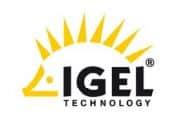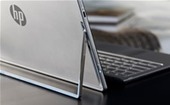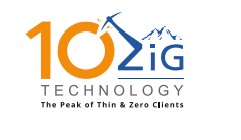The fifth edition of the Universal Management Suite (UMS 5) makes remote management of IGEL clients more efficient and expands the standardized endpoint management system to include devices running Windows 7. This additional functionality (Unified Management Agent) will help IGEL enter the workspace management market above and beyond pure administration of IGEL hardware and software thin clients. In addition, customers can benefit from integrating the UMS into their existing enterprise management system with the new IGEL Management Interface.
Reading, UK. October 7, 2015 – With the new release of the Universal Management Suite 5 (UMS 5), IGEL is further reducing the cost and effort involved in endpoint management for customers and partners with two strategic innovations: The IGEL Unified Management Agent for Windows 7 and the IGEL Management Interface (IMI), which enables simple, optional integration of the UMS into an existing enterprise management system.
Administration of devices with Windows 7
The IGEL Unified Management Agent for Windows 7 enables devices with Windows Professional or Embedded Standard 7 installed to be remotely administered and securely centrally managed in the standardized UMS console, alongside thin and zero clients and PCs and notebooks with the IGEL Linux operating systems (software thin clients).
This new functionality is ideal for customers that want to continue to operate their PCs and notebooks with the Windows operating system but still want to benefit from the IGEL UMS central management capabilities. The Universal Management Agent for Windows 7 can be licensed and will be available in the fourth quarter of 2015.
The IGEL Management Interface (IMI)
Using the optional IGEL Management Interface (IMI), the UMS 5 can now provide integrated endpoint management under an existing enterprise management system. As a standardized REST API, the UMS 5 allows large organizations or those with distributed offices to administer all IGEL thin and zero clients within their IT infrastructure quickly and easily by means of existing systems, such as Microsoft SCCM or IBM Tivoli.
The IMI is also suitable for system integrators and suppliers of Client as a service (Claas) or Desktop as a service (Daas) solutions to multiple customers.
UMS5: Modern look and feel, and more performance
Customers using the latest UMS 5, which comes as standard with all IGEL client solutions, will notice the new look & feel with modern designed icons, quickly followed by the enhanced performance. Navigation is faster thanks to a tree structure: Terminal devices, profiles and other infrastructure detail now load in the user interface far more quickly. IGEL has also added two additional languages and keyboard layouts for Spanish and Italian.
Functional improvements for everyday work
The practical tools that make administrators’ work even easier include new comparison and import functions. With comparison, differences between two configuration profiles can be seen at a glance, allowing older configurations to be quickly brought up-to-date. The import functionality means the current configuration of an IGEL client installed in the field can be imported as a profile into the UMS, so that it can be easily assigned to other clients or a client group by drag & drop.
“Our customers have loved our UMS Suite for many years, this latest version enables new functionality to deliver strategic IT change to customers,” said Simon Richard, IGEL Technology Managing Director for the UK & Ireland. “UMS 5 has benefits to existing customers who have migrated to thin client but with the addition of the IMI and Universal Management Agent, we can now deliver the management they love, to the desktops they were never able to convert to thin clients. For those organizations that have Windows 7 PC’s or other vendors thin clients running Windows, we can now deliver our management platform without them having to throw away the existing hardware.”
“When I look back at thin client management 15 years ago, it was departmental management that ruled the day and that was all that was needed. IGEL has been the leader in taking thin client management into the enterprise customer for many years and with UMS 5, we are able to deliver increased value, functionality and flexibility to our existing customers and deliver a migration path for those organizations using competitor products.”
Price and availability
The new IGEL Universal Management Suite 5 (UMS 5) will ship with all IGEL thin and zero clients, as well as the thin client software IGEL Universal Desktop Converter 2 (UDC2) from October 14th 2015.
The IGEL Universal Management Agent will be available at the end of the month at a price of £30+vat per device including the 1st year’s maintenance and annual maintenance renewal at £14+vat.
About IGEL Technology
A world leader in thin and zero client solutions, IGEL Technology helps organizations improve the agility, efficiency, and security of their virtual desktop and application delivery systems. IGEL produces one of the industry’s widest range of hardware thin and zero clients, based on Linux and Microsoft Windows, and leads the market in software based thin clients allowing customers to access a broad spectrum of server-based infrastructures and applications. IGEL also offers powerful and intuitive management software for easy deployment and administration of thin clients throughout any size organization. Partnerships with industry leaders like Citrix, VMware, Red Hat, and Microsoft ensure that IGEL provides the most up-to-date technology and trustworthy security to clients in industries that include Healthcare, Education & Research, Public Sector, Financial, Insurance, Retail, Logistics, and Manufacturing. IGEL has offices in the United Kingdom, Australia, France, the Netherlands, Austria, Belgium, Switzerland, Sweden, the United States, Germany, Hong Kong, Shanghai, Beijing and Singapore and is represented by partners in over 50 countries worldwide. To learn more, visit www.igel.co.uk or follow us on Twitter: twitter.com/IGEL_Technology
Editorial Contacts:
Paul Smith
Tel: +44 (0)7770 828525
Email: [email protected]
Post Views: 416




























